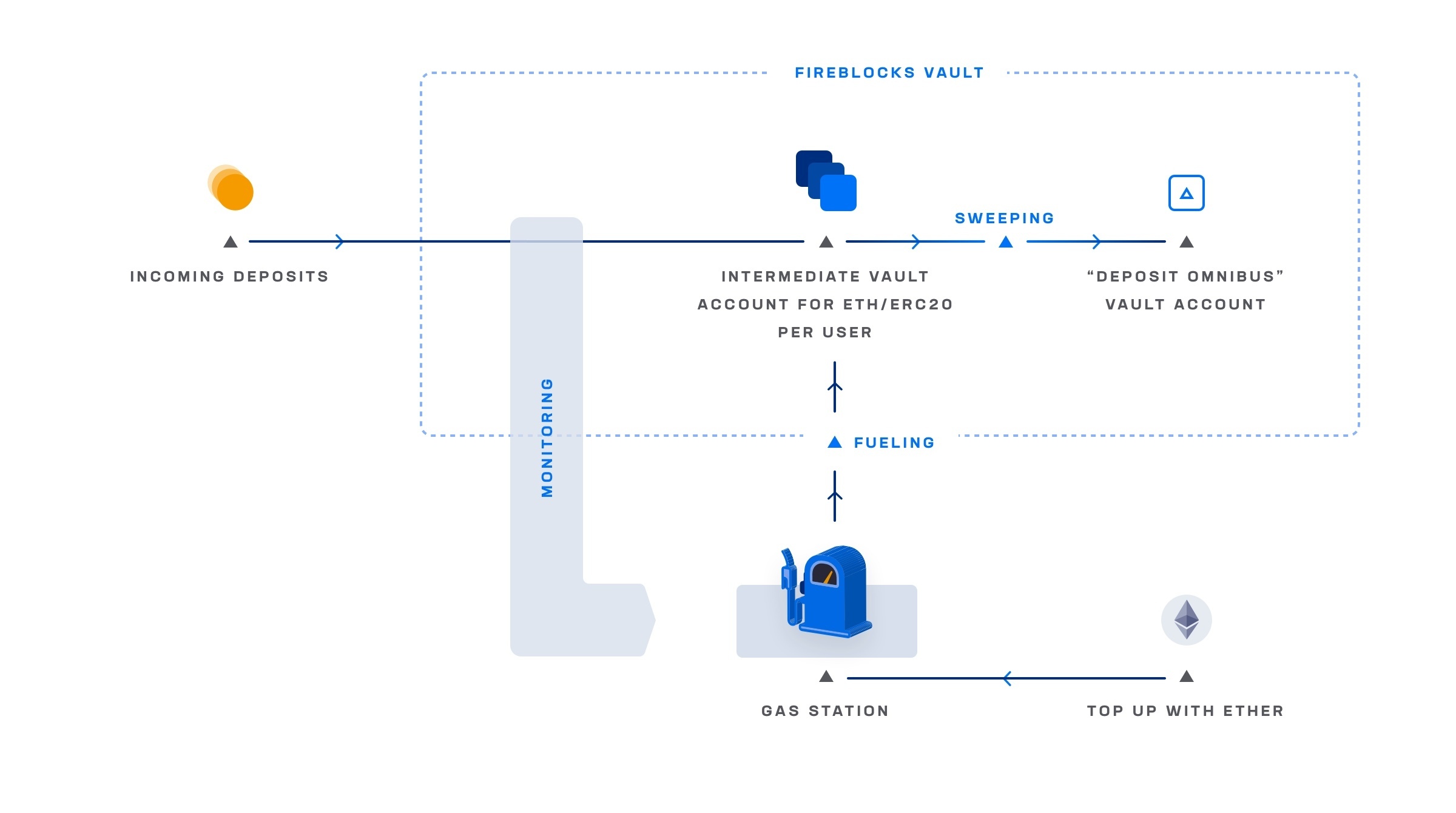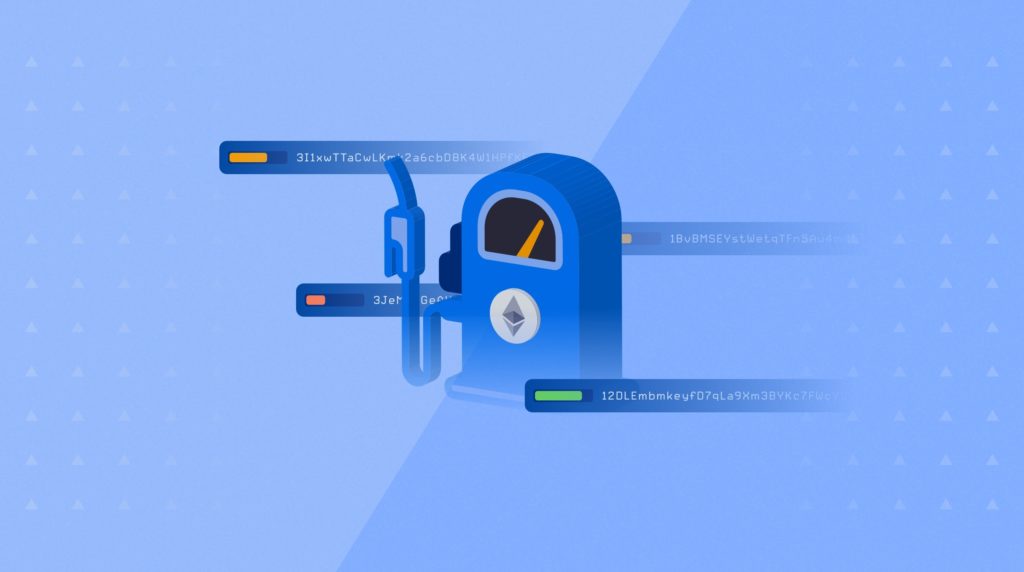If you run a retail-facing crypto business (like an exchange, lending desk or neobank), you’re likely receiving hundreds or thousands of ERC20 deposits day in and day out – and allocating a new address to each client to manage these deposits accurately.
The management of these addresses and the high fees associated with them can cause serious engineering, operations, and capital efficiency issues, as you’re tasked with constantly ensuring that user accounts have sufficient Ether (gas) to pay smart contract transaction fees.
That’s why we’re rolling out Ethereum Gas Station to completely streamline and automate this process. Ethereum Gas Station enables your team to automate Ether replenishment for ERC20 deposits, eliminating the need to prefill accounts. Through doing so, it helps save on costs and resources required to refuel customer accounts (or reissue transactions that fail due to low gas balances).
Today, retail crypto businesses face several significant challenges when it comes to managing ETH addresses.
Challenge #1: Manual ETH address management
Crypto businesses receive ERC20 deposits into segregated ERC20 wallets for each customer. Most businesses sweep these deposits into a central omnibus account. As ERC20 tokens are smart contract-based, they require a fee to execute token transfer into a central account – paid in Ether, and known as gas.
Today, your operations team most likely has to manually refill user accounts. If you fail to do so for a given account, a transaction could end up being rejected – and then you’ll have to resubmit it. This wastes time for the ops team and ties up ETH.
Challenge #2: Managing ETH addresses with multisig
Wallets based on multisig technology can only create addresses on-chain, and businesses incur a gas fee every time they need to create a wallet for a new account. At scale, this can get expensive quickly.
This makes multisig wallets expensive and inefficient for ETH address management:
- The gas fees to create a wallet on-chain usually average around $20 to $30.
- Unfortunately, not all wallets that get created get used and the gas fees spent on creating those wallets are non-redeemable.
Before Ethereum Gas Station, one of the top issues with ERC20 was capital inefficiency, as funds could get stuck in prefilled accounts that weren’t actually being used.
For example, a leading crypto lending desk has roughly 300,000 users. If 10% of those users wanted to transact Ethereum, creating the necessary wallets using multi-sig would cost the lending desk close to $1M (assuming wallet creation averages at around $30).
With Fireblocks’ MPC-based wallet, ETH wallets cost $0 to create, and are only fueled once a transaction is submitted.
Fireblocks’ ETH Gas Station
Fireblocks’ Ethereum Gas Station automatically fuels ERC20 accounts with a pre-set amount of gas when incoming ERC20 deposits are detected. Once the gas station balance gets low, Fireblocks sends you an alert to refill your Gas Station account so it can continue automatically fueling.
This eliminates the need to:
- Manually prefill accounts
- Resubmit rejected transactions
- Devote operational and engineering resources to ERC20 address/fee management
There’s no longer any need to develop complicated workflows to replenish gas balances or resubmit failed transactions.

Fireblocks Ethereum Gas Station automatically fuels your users’ ERC20 accounts, so you don’t have to worry about rejected transactions or stalled funds.
How to configure Fireblocks ETH Gas Station to maximize capital efficiency
To ensure you’re utilizing your capital as efficiently as possible, Ethereum Gas Station can be configured with a minimum threshold and a maximum cap:
Minimum threshold: Upon detecting an incoming transaction, Fireblocks will check the gas balance of the deposit address and in case it is below the threshold, fuel it up to the maximum cap.
Maximum cap: Define the maximum acceptable gas price for a specific fueling transaction; Fireblocks will only execute the deposit when the contract of the gas fee is within the specified range.



